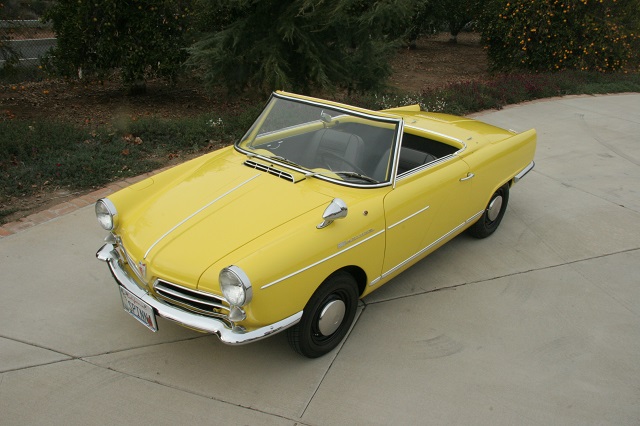While Porsche’s upstart 356 and the breathtaking Mercedes-Benz 300SL were Germany’s first real post-War sports cars, they weren’t the only attempt to capitalize on the economic recovery. But far from being just a recovery, West Germany’s “Wirtschaftswunder” – economic miracle – aided by the Marshall Plan and a focus on strengthening the border states of the ‘Iron Curtain’ meant that capitalism manifested itself in new ways. Cashing in on a re-emerging middle class with newfound wealth and prosperity, companies like BMW and Volkswagen launched new sportier versions of their small, economical sedans. The 700 Coupe and Karmann Ghia, launched in 1959 and 1955 respectively, might not have had the power of Porsche or the Gullwing, but still brought sport and style to a much larger market. Both designs utilized existing technology to create a rear-drive, rear-engine two-seater that still was budget friendly.
However, they weren’t alone in the market. Auto Union’s main production lines in Chemnitz lay firmly in Soviet control, so it was the DKW brand which shouldered the responsibility of rebuilding the company. That would bear the 1000SP in the late 1950s – a lovely, but not particularly sporty, personal coupe and convertible. Prior to its merger with the Volkswagen Group in 1969, though, NSU – a firm more known for its pre-War motorcycles – had ventured into small sports cars. The result was the legendary Prinz and TT models; small, efficient, fun to drive rear-engine sedans. NSU branched out in 1964 and offered the world’s first rotary-powered limited production convertible in an attempt to ascertain if the technology was applicable to normal production. With technically a mid-rear design, it was a revolutionary alternative to the BMW 700:







